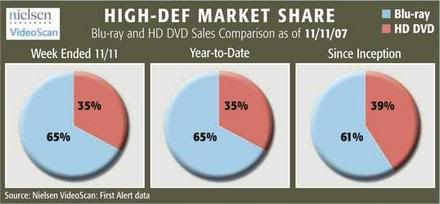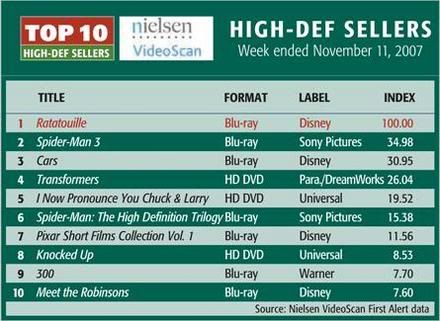VanMardigan said:
Oh, I see (I think). My tv needs to do 48, 72, or 120? So 24 doesn't count?
If so, I'll just disable the option on the Ps3 then.
Yeah....afaik, the Mits WD-57734 accepts 1080p/24 but will not display it at 48, 72 or 120Hz so judder is not avoided...
Think of it this way....there are 3 classes of TVs
1.) TV does not accept 1080p/24 Blu Ray or HD DVD source and just displays everything @ its native 60Hz frame rate(most pre 2007 HDTVs do this)
2.) TV
*DOES* accept 1080p/24 Blu Ray or HD DVD source but doesn't do 3:3 cadence processing so just displays everything @ its native 60Hz frame rate, potentially re-introducing judder from 24fps source(Your mits is in this class)
3.) TV accepts 1080p/24 Blu Ray or HD DVD source and has available framerate mode that is a multiple of 24 (either 48Hz as is the case in some Sony SXRDs, 72Hz like the Pioneer Kuros or 120Hz like the newer LCDs) Judder is *usually* avoided in this case, but some of the 120Hz LCDs dont repeat frames but instead interwieve black frames between normal frames and in this case judder is magnified:lol
To re-interate, a Movie is shot at 24 frames per second, this means that for every second of the movie, there are 24 images captured.
Televisions, however, typically work at 60Hz in NTSC territories, which means they must show 60 images per second. 24 doesn't fit into 60 evenly, so what is done is the first image is shown three times, the next one twice, the next three times, and so on. Doing it this way fits the 24 frames into 60 nicely, but as every second image is shown for longer, the image "judders" and movement is not smooth.
Newer televisions can now accept 24Hz signals from BluRay or HD DVD players. If they are dealing with the signal properly, it means that it is shown at a multiple of 24, typically that is 48Hz, 72Hz or 120Hz.
The reason most displays don't display the 24fps signal at 24Hz is because the image flickers very badly when you do this. Depending on the display technology, it is sped up to different rates. 48Hz is common with projectors, which means that every image is shown twice - this works well, and is what most cinemas use.
Some (but not all) Plasmas typically use 72Hz - this is because 48Hz has a noticeable flicker on a Plasma, due to the way they draw their image.
Some displays out there, usually older ones, may accept a 24Hz signal, but then convert this internally back to 60Hz, which means they re-introduce the judder, completely missing the point of why you are sending it a 24Hz signal in the first place. It sounds like your Mits is doing that.


